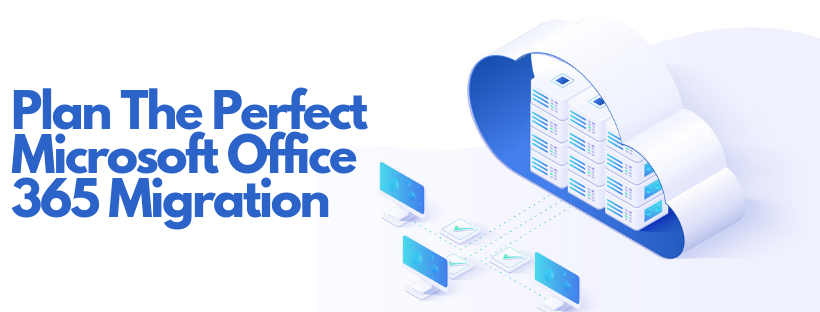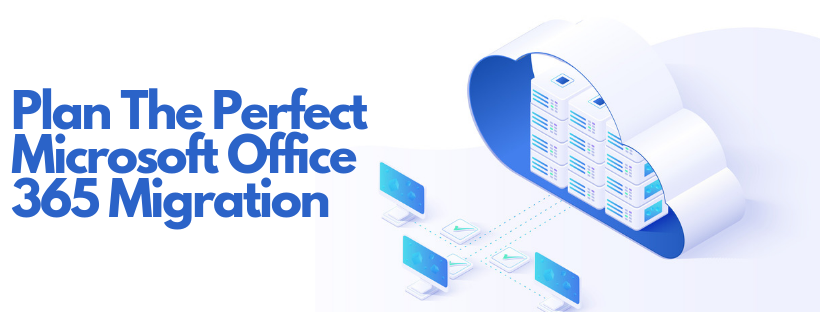In the fast-paced landscape of today's workplaces, organizations often face the challenge of migrating their Office 365 tenant to a new environment. This could be a result of mergers, acquisitions, restructuring, or other factors. While the thought of migrating your entire Office 365 tenant may seem overwhelming, adopting a user-friendly approach can streamline the process for both your IT team and end-users. In this blog post, we will explore the steps and strategies for a seamless and hassle-free Office 365 tenant-to-tenant migration.
Get a free assessment! Our expert team will perform a deep dive of your systems and network! Our average customer finds over 25% in annual licensing savings - while locating security vulnerabilities and compliance issues.
Understanding Office 365 Tenant to Tenant Migration
Before we delve into the user-friendly approach, let's briefly understand what a tenant-to-tenant migration consists of:
- Office 365 Tenant
- Office 365 Migration
Office 365 Tenant
An Office 365 tenant is essentially the backbone of your organization's digital presence on Microsoft's cloud platform. It serves as a centralized hub for all your users, email accounts, files, applications, and other crucial resources. By housing everything under one roof, your organization can streamline collaboration, enhance productivity, and ensure seamless access to important data and tools.
Within an Office 365 tenant, each user is assigned a unique identity, enabling them to securely access their personalized settings, files, and applications. This allows for a personalized and tailored experience, as users can customize their workspace to suit their specific needs and preferences.
In addition to user accounts, an Office 365 tenant also encompasses email accounts, providing organizations with a reliable and efficient email solution. With features like spam filtering, advanced security measures, and seamless integration with other Office 365 applications, email communication becomes a breeze.
Applications within an Office 365 tenant offer a range of functionalities and tools to enhance productivity and streamline workflows. From familiar applications like Word, Excel, and PowerPoint to more specialized tools like Teams for collaboration and SharePoint for document management, the tenant provides a comprehensive suite of applications to meet the diverse needs of organizations.
Office 365 Migration
Tenant-to-tenant migration refers to the process of transferring various Office 365 resources, including emails, calendars, contacts, documents, and settings, from one Office 365 tenant to another. This migration is essential when organizations undergo mergers, acquisitions, or rebranding, or when they simply want to consolidate their Office 365 environments.
By performing a tenant-to-tenant migration, organizations can ensure a seamless transition of their digital assets to the new tenant. This not only helps maintain business continuity but also enables users to access their personalized settings, files, and applications in the new environment.
During the migration process, it is crucial to plan meticulously to minimize disruptions and ensure a user-friendly experience. This involves identifying migration goals, scope, and timeline, as well as determining which users and data will be migrated. Transparent communication with end-users is also vital, as it helps manage expectations and provides clear instructions for the migration process.
Migration Steps to Follow
Before migrating, it is recommended to conduct a thorough assessment of the data to identify any redundant or obsolete information. This presents an opportunity to clean up the resources and improve overall data hygiene.
To ensure a smooth transition, pilot migrations with a small group of users can be performed to identify and address any potential issues. Implementing a coexistence strategy during the migration allows users in both the source and target tenants to collaborate seamlessly, minimizing disruptions.
Properly configuring data mapping and mapping rules is crucial to reduce data discrepancies and ensure a smooth user experience. Instead of migrating all users at once, a phased approach can be adopted, prioritizing users based on their roles, departments, or project timelines. Offering training sessions or resources to help users adapt to the new environment can boost productivity and minimize frustration.
Continuous support throughout the migration process is essential, with a dedicated support team ready to address any issues or questions that arise. Once the migration is complete, conducting a post-migration cleanup, reviewing and updating permissions, and monitoring and optimizing the new tenant for performance and security are crucial steps to ensure a smooth and secure user experience.
Tenant to Tenant Migration Architecture Model
When it comes to mergers, acquisitions, divestitures, or other scenarios that require migrating an existing Microsoft 365 tenant to a new tenant, there are various architecture approaches to consider. Many customers choose to work with Microsoft Consulting Services or a Microsoft partner for their tenant migrations, often utilizing third-party tools for content migration.
Use the Tenant-to-tenant migration architecture model to understand how to plan for Microsoft 365 tenant-to-tenant migrations and the steps of a migration.
The User-Friendly Approach
Embarking on a tenant-to-tenant migration within your Office 365 environment is a task that demands careful planning and execution. This transformative journey involves not only the technical aspects but also the user experience. Picture this: a seamless transition, where your organization's data, resources, and operations move effortlessly from one tenant to another, with minimal disruptions and maximum efficiency.
Achieving this level of migration nirvana requires a comprehensive strategy, and in this guide, we'll walk you through each essential step. From meticulous planning and user communication to data assessment, the right tools, testing, and continuous support, we've got you covered.
-
Thorough Planning: The key to a user-friendly tenant-to-tenant migration is meticulous planning. Start by identifying your migration goals, scope, and timeline. Determine which users and data will be migrated and communicate this transparently with your team.
-
User Communication: Inform your end-users about the upcoming migration well in advance. Provide clear instructions, FAQs, and a dedicated point of contact for any questions or concerns they may have. A smooth user experience begins with clear communication.
-
Data Assessment and Cleanup: Before migration, conduct a thorough analysis of your data. Identify redundant, obsolete, and trivial (ROT) data, and take this opportunity to clean up your resources. Reducing data volume can expedite the migration process and improve overall data hygiene.
-
Choose the Right Tools: Invest in migration tools designed for tenant-to-tenant migrations. Tools like BitTitan, ShareGate, and MigrationWiz can simplify the process, reduce downtime, and ensure data integrity.
-
Test Migrations: Run pilot migrations with a small group of users to identify and iron out any potential issues. Testing allows you to address unforeseen challenges before the full-scale migration.
-
Coexistence Strategy: Consider implementing a coexistence strategy during the migration. This approach enables users in both the source and target tenants to collaborate seamlessly during the transition phase.
-
Data Mapping and Mapping Rules: Ensure that your data mapping is well-defined. Mapping rules specify how data from the source tenant should be mapped to the target tenant. Properly configured mapping rules reduce data discrepancies and ensure a smooth user experience.
-
Migrate in Stages: Instead of moving all users at once, consider migrating in stages. Prioritize users based on their roles, departments, or project timelines. This phased approach minimizes disruptions and allows your IT team to focus on smaller, manageable groups.
-
User Training: Offer training sessions or resources to help users adapt to the new environment. Familiarity with the tools and features of the target tenant can boost productivity and reduce frustration.
-
Continuous Support: Maintain open lines of communication throughout the migration process. Have a support team ready to address any issues or questions that arise during and after the migration.
-
Post-Migration Cleanup: Once the migration is complete, conduct a post-migration cleanup. Review and update permissions, audit configurations, and ensure that everything is functioning as intended.
-
Monitoring and Optimization: Continuously monitor the new tenant for performance and security. Optimize configurations as needed to ensure a smooth and secure user experience.
Concluding Thoughts
Migrating an Office 365 tenant to another can be a complex endeavor, but a user-friendly approach can significantly reduce the challenges and ensure a smooth transition. By focusing on clear communication, thorough planning, and the right tools and strategies, you can minimize disruptions and provide your end-users with a positive migration experience. Remember, a successful migration is not just about moving data; it's about ensuring that your organization can continue its operations seamlessly in the new environment.
Migrate workloads to and from O365 effortlessly with our expert engineering team. We make your complex migration fast, easy, and safe. Get a quote today!





